From 7 Pillars to Growth Cycle
At DotControl, we trace our roots back to the origins of Growth Hacking, a journey that has led us to develop our successful 7 Pillars of Growth Hacking. Over time, we've helped numerous clients achieve growth as they embraced our methodology and harnessed its power to drive their businesses forward.
But as the market continually evolves, we realize the need to remain agile and adaptable in our approach. We acknowledge the unyielding nature of growth—it's an ongoing, iterative process that demands constant refinement to stay ahead.
Cycle of Growth
We observed that the growth journey doesn't stop at the seventh pillar. Instead, it is a cycle, continuously presenting new opportunities and challenges for continuous growth. To best meet the changing demands of the market and embrace this dynamic growth process, we made a strategic decision to evolve our approach. We proudly introduce DotControl’s Growth Cycle —a more streamlined and flexible framework that aligns with the ever-changing landscape of Growth Hacking. We gladly explain what our growth cycle entails.

Strategy
At the heart of our growth cycle lies a central point that guides and directs the entire growth hacking process— the Strategy. A strategy is formed around the One Metric That Matters (OMTM), something we identify at the start of a growth process with our clients. A OMTM is typically an ambitious and specific growth goal, for example, “to achieve 10 million in revenue by 2024.” It is very important that the OMTM is measurable, achievable and straightforward so you can let it guide your team’s every move. All of your activities should be geared towards achieving your OMTM.
The Four Elements
Listen to your market
One of the main reasons why startups fail is that they try to sell a product that nobody wants. News flash: Just because you think you have an amazing product, doesn’t mean that there is a market for it.
Top reasons start-ups fail
|
1. Ran out of cash/failed to raise new capital |
38% |
|
2. No market need |
35% |
|
3. Got outcompeted |
20% |
|
4. Flawed business model |
19% |
|
5. Regulatory/legal challenges |
18% |
|
6. Pricing/cost issues |
15% |
Source: cbinsights
How to avoid this risk then? The only way is to carefully listen to your market by doing market research first and tailor your product to what is needed there. Create a customer desire map. Research your potential customers as thoroughly as you can until you know what makes them tick. You should aim at discovering three deep feelings of customers towards a product, these are the feelings to look for:
| Hopes & Dreams |
What do the customers want to achieve or attain above all else through getting the product? |
| Pains & Fears |
What kind of daily fears or struggles do your customers experience at the moment? |
| Barriers & Uncertainties |
What are the possible obstacles or hesitations that customers experience? |
Customer Desire Map
In the end, the goal is to know your customers better than they know themselves. Of course, you can use surveys, focus groups, interviews and other traditional market research tactics to find this information, but consider some other options as well. Where does your potential customer segment congregate and how can you tap into what they are saying?
Product-market fit
Using the results from your market research, you can determine if you have a product-market fit (PMF). This is about finding ways to remove the barriers and uncertainties your customers might have about your product or service. It’s about offering them a product they cannot live without.
- Take a minute to think about some products that you would be devastated if you could no longer use -
In most traditional companies, product development teams are separate from the marketing teams. The product developers build the product and the marketer's job is to sell it. One of the reasons our growth consultants are so successful at helping companies grow is that we don’t live within these boundaries.
When you are working towards your OMTM, all options need to be on the table, including the willingness to take your product back to the drawing board and make adjustments based on your continual process of market research, measurement, and testing. Based on experimentation and constant iteration, you should tailor your product to your customers.
A rule of thumb is: When at least 40% of your users report that they would be very disappointed if they could no longer use your product or service, you probably have a PMF. Sean Ellis found this out after working with more than 100 startups. Those who had more than 40% PMF were able to achieve traction and growth. Those that didn’t, constantly struggled to stay afloat.
PMF is vital to achieving growth. If you don’t have a product-market fit, your marketing efforts are going to be wasted as you try to push a product nobody wants. When you have a PMF, people will be so satisfied with your product that they will become your ambassador as they share it with their friends.
Product-Market Fit is about building growth into your product or service so that it sells itself.
Measurement
When you pursue your OMTM, everything you do to speed up growth should be measurable. If you’re achieving results, great! If not, stop and move on to the next idea.
As the saying goes, “When you assume, you make…”, the quote growth hackers live by. There is no room for assumptions, all decisions should be based on data. And in order to have that data, you need to start measuring. Having the right measurement tools is crucial.
If you succeed in reaching some target, but you didn’t measure everything you did, you don’t know what it was that led to success. Conversely, if you fail at something, without measurement you won’t be able to avoid the same mistake next time. Data collection and analysis is the optimum way to know what exactly correlates with success.
Luckily, technology has made it possible to track almost everything you do. Here are just a few of the online measurement tools we use to help businesses track and improve their performance.
- Google Analytics
- UsabilityHub
- Hotjar
- Piwik Pro
- Matomo
- ABTasty
- Umbraco uMarketingSuite
These tools will give you rich information about how users interact with your websites and apps. Where do they get stuck? Where are they clicking? What makes them leave? Once you understand your customer’s journey, you can begin to formulate hypotheses and start experimenting.
To ensure the highest level of data accuracy, privacy, and security, we adhere to the practice of server-side tracking. By implementing server-side tracking, you gain more control over the data you collect and share with third parties when users have given consent to do so.
Traction
If you are handing over bags of money for ads on Google and Meta without a clear idea of your ideal ROI, it is time to rethink your approach. It’s not that Google Ads and Meta advertising are not useful - on the contrary! But they are not the only traction channels. It is important to have a diverse marketing mix.
How can you best reach and interact with your (potential) customers?
There are so many different marketing channels you could (and should) exploit to grow your business. Some of the most popular traction channels these days are: Meta, Google Ads, Search Engine Optimization, Marketing Automation and TikTok. However, you don’t want to use all of them simultaneously. Figure out what the right combination is for your business.
Remember, it is not about the size of your reach, it is about its effectiveness. In the end, it doesn’t matter how many people have heard of you. What matters is that the right people know about you: the people with the highest potential to become loyal customers.
Each of the traction channels deserves its own blog post but for now, it is enough that you are at least aware of them. One of the biggest pitfalls is that people tend to only utilise what they are familiar with. By doing this, you may be missing out on big opportunities. You can never know exactly what your market is going to do, or what channels are going to work best. Instead experiment, measure and test!
Optimise traction channels to reach exponential growth
The key to growth hacking is to test, test, and keep testing! Using your research and measurement techniques, you should continually search for ways to optimise. This requires a systematic approach in which you develop hypotheses and then test them. Hypotheses need to be simple, clear, relevant to your goals and based on data. Like this:
- Because we saw [data/feedback]
- We expect that [change] will cause [impact]
- We’ll measure this using [data metric]
But where should you start? The Lift Model® Developed by Chris Goward is one guide you can use to ensure you cover many of the most important aspects of your business. It consists of 6 essential elements that you should constantly monitor, measure, tweak and optimise.

Value: Are you communicating the benefits of what you are offering with crystal clarity?
Relevance: Are the design elements on your site motivating and stimulating the desired action?
Clarity: Is the content on your site as clear as possible? Are users getting lost and confused?
Distraction: Are there design elements on your site that prevent or distract users from taking the desired actions?
Anxiety: Are you credible? What is causing uncertainty or doubt on your website?
Urgency: How can you add a sense of urgency for people to take action?
To summarize, this is the basis of all growth trajectories at DotControl. Start to use them – we can’t promise you will be the next Airbnb, but we can ensure that you will see results quickly. We know because we have helped lots of companies accomplish exponential growth; just check out some of our success stories below.



